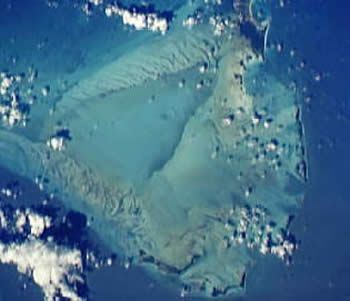 There is no place for God in theories on the creation of the Universe, Professor Stephen Hawking has said. He had previously argued belief in a creator was not incompatible with science but in a new book, he concludes the Big Bang was an inevitable consequence of the laws of physics.
There is no place for God in theories on the creation of the Universe, Professor Stephen Hawking has said. He had previously argued belief in a creator was not incompatible with science but in a new book, he concludes the Big Bang was an inevitable consequence of the laws of physics.
The Grand Design, part serialised in the Times, says there is no need to invoke God to set the Universe going. "Spontaneous creation is the reason there is something," he concluded.
Stephen Hawking: God did not create Universe
Study shakes up scientists' view of San Andreas earthquake risk
 Southern California is long overdue for a major earthquake along the San Andreas fault, according to a landmark study of historic seismic activity released Friday.
Southern California is long overdue for a major earthquake along the San Andreas fault, according to a landmark study of historic seismic activity released Friday.
The study, produced after several years of field studies in the Carrizo Plain area about 100 miles northwest of Los Angeles, found that earthquakes along the San Andreas fault have occurred far more often than previously believed.
Magnetic mega-star discovery challenges black hole theory
 A neutron star with a mighty magnetic field has thrown down the gauntlet to theories about stellar evolution and the birth of black holes, astronomers said today. The "magnetar" lies in a cluster of stars known as Westerlund 1, located 16,000 light years away in the constellation of Ara, the Altar.
A neutron star with a mighty magnetic field has thrown down the gauntlet to theories about stellar evolution and the birth of black holes, astronomers said today. The "magnetar" lies in a cluster of stars known as Westerlund 1, located 16,000 light years away in the constellation of Ara, the Altar.
Westerlund 1, discovered in 1961 by a Swedish astronomer, is a favoured observation site in stellar physics. It is one of the biggest cluster of superstars in the Milky Way, comprising hundreds of very massive stars, some shining with a brilliance of almost a million Suns and some two thousand times the Sun's diameter.
How Brilliant Computer Scientists Solved the Bermuda Triangle Mystery
 According to two research scientists the mystery of vanished ships and airplanes in the region dubbed "The Bermuda Triangle" has been solved.
According to two research scientists the mystery of vanished ships and airplanes in the region dubbed "The Bermuda Triangle" has been solved.
The methane—normally frozen at great pressure as gas hydrates embedded within subterranean rock—can become dislodged and transform into gaseous bubbles expanding geometrically as they explode upwards. When these bubbles reach the surface of the water they soar into the air, still expanding upwards and outwards.
Stars reveal carbon 'spaceballs'
 Scientists have detected the largest molecules ever seen in space, in a cloud of cosmic dust surrounding a distant star. The football-shaped carbon molecules are known as buckyballs, and were only discovered on Earth 25 years ago when they were made in a laboratory.
Scientists have detected the largest molecules ever seen in space, in a cloud of cosmic dust surrounding a distant star. The football-shaped carbon molecules are known as buckyballs, and were only discovered on Earth 25 years ago when they were made in a laboratory.
These molecules are the "third type of carbon" - with the first two types being graphite and diamond.
Universe's biggest known star discovered by British astronomers
 The heaviest known star – with a mass 320 times greater than the Sun's – has been discovered at the edge of our galaxy by British astronomers. Scientists at the University of Sheffield found the stellar giant – named R136a1 – using the European southern Observatory's Very Large Telescope in Chile and data from the Hubble Space Telescope.
The heaviest known star – with a mass 320 times greater than the Sun's – has been discovered at the edge of our galaxy by British astronomers. Scientists at the University of Sheffield found the stellar giant – named R136a1 – using the European southern Observatory's Very Large Telescope in Chile and data from the Hubble Space Telescope.
The star is located in the Tarantula Nebula in the Large Magellanic Cloud, a small "satellite" galaxy which orbits the Milky Way. Previously, the heaviest known stars were around 150 times the mass of the Sun, and this was believed to be close to the cosmic size limit.
Hubble Space Telescope captures birth of a new star
 The pictures of the Carina constellation were taken by the Hubble and were described by experts as looking like a "July 4 fireworks display". It shows a new star being born from within an existing star cluster.
The pictures of the Carina constellation were taken by the Hubble and were described by experts as looking like a "July 4 fireworks display". It shows a new star being born from within an existing star cluster.
The cluster is surrounded by clouds of interstellar gas and dust - called a nebula. This makes up the raw material needed to make a new star. The nebula, located 20,000 light-years away in the constellation Carina, contains a central cluster of huge, hot stars, called NGC 3603.
More Articles...
Page 49 of 62

 Science Glance
Science Glance






























